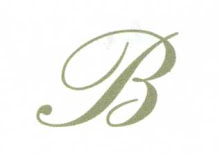| A U.S. Navy Grumman F4F-3 in non-specular blue-grey over light-grey scheme in early 1942. It is similar to one Art Brassfield would have flown during the Battle of the Coral Sea. |
I've pretty much finished the book The First Team: Pacific Naval Air Combat from Pearl Harbor to Midway By John B. Lundstrom. I have to say, it's a well researched and well written reference book. Lundstrom goes into great detail about the crucial Battle of the Coral Sea and the Battle of Midway and focuses on the activities of the fighter squadrons involved. These two battles were key defenses and stopped Japan's plans to occupy Port Moresby and Midway Island.
Art Brassfield was attached to VF-42 aboard the USS Yorktown during the Battle of the Coral Sea, but that squadron would be disestablished and he was moved to VF-3 aboard USS Yorktown for the Battle of Midway. He was a Lieutenant, Junior Grade and was the engineer officer for both squadrons. During March 1942, he helped identify a material deficiency in the self-sealing fuel tanks on the F4F-3 Wildcats. The self-sealing tanks on the Wildcat were life savers, they were capable of sustaining multiple 7.7 mm bullet holes without leaking. However, some of the tanks were developing leaks. Brassfield and a team of VF-42 chiefs discovered all the leaking tanks were the cemented type, glued, not vulcanized and that information helped identify the defects. The self-sealing tanks were a critical advantage that the F4F's had over the Japanese "Zero" fighter. The Zero was more maneuverable, but the Wildcat was able to take more damage.
In early May 1942, the USS Yorktown, along with VF-42 and LTJG Art Brassfield were in the Coral Sea on a mission to stop the invasion of Port Moresby. On the morning of May 5, 1942, Brassfield and three other F4F-3 Wildcats were called upon to intercept a bogey. It was a Japanese Kawanishi Type 97 flying boat on a mission to locate the US carrier task force so that the it could be attacked. Three of the intercepting F4F-3's, including Brassfield's fired on the flying boat, causing it to crash. Brassfield was credited with 1/3 of a "kill", or aerial victory for that interception.
On May 8th, Art Brassfield was again assigned to fly Combat Air Patrol (CAP), this time the task force had already been found by the Japanese carrier group and a large group of bombers and torpedo planes were inbound. He was the leader of "Wildcat Orange" section of two F4F-3's. Unfortunately, even though the sky was full of planes, Wildcat Orange was not in a very good position to intercept the bombers prior to their attack. As the attack was on the way inbound, Brassfield mixed it up with some Zeros, but he ended up having to dive away from the dogfight to escape several Zeros, which were much more maneuverable than his F4F-3. After diving away to escape the escorts Brassfield was finally spotted a D3A kanbaku (Val) dive bomber diving to attack the US carrier Lexington. In the midst of fierce anti-aircraft fire coming towards him, he managed to down one of the bombers without getting shot down by friendly fire.
After downing the kanbuku bomber, Brassfield leveled out and got pounced on by three Zeros. Quick evasive maneuvers helped him to avoid being hit on the initial pass and he downed one Zero. Unfortunately the other two ended up on his tail and they shot up his Wildcat. After the mission his aircraft was found to have ten holes in it, including one in the main fuel tank. The self-sealing tank did not leak and the armor plate behind his seat stopped the 7.7 mm bullets shot by the zeros. Lundstrum quotes Brassfield describing the situation as follows, "The 7.7 bullets were clattering on my armor plate." Later he said, "Then there was a hell of a thing, much noise and smoke in my cockpit." At that point, one of the 20 mm explosive cannon shells exploded in his instrument panel. The shell grazed his left elbow and shrapnel from the explosion hit his left knee. It also started a small fire in the cockpit when some cotton he brought for hearing protection caught fire. Luckily for him, there was a cloud close by and Brassfield hid from the zeros in the cloud.
During that Battle, the carrier Lexington had been hit multiple times and would ultimately sink as a result. Brassfield's carrier had also been hit by a bomb, but would not sink as a result. After two hours in the air, Brassfield was low on fuel and wounded. His flaps did not work and as he was circling Yorktown to land anti-aircraft gunners nearly tried to shoot his plane down thinking it was an enemy aircraft. Fortunately the gunnery officer stopped them. Brassfield was credited with two aerial victories that day, one type 99 dive bomber and one zero fighter.
Brassfield was awarded the Navy Cross for his actions May 5 - 8, 1942 during the battle of the Coral Sea. The Navy Cross is the 2nd highest award given by the Navy for valor, behind the Medal of Honor. The Military Times has published the citation for his Navy Cross in their Hall of Valor on this page.
Read more about the Battle of the Coral Sea on wikipedia or the US Naval History and Heritage Command. The long and the short of it is that while it was a tactical loss for the US, it was a strategic victory because the attack on Port Moresby was turned back.
I'll post in the future about Arthur Brassfield's activities during the Battle of Midway in June 1942.


